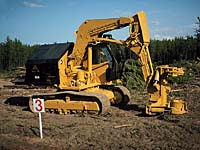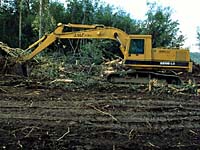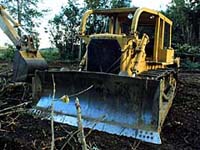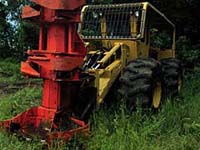Timber Leasing
Measuring Forest
Measuring wood
Harvesting Practices
Cutting Methods
Susatined Yield

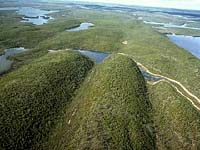
Few companies that work in the forest harvesting and replanting trees own the land on which they are working. In Saskatchewan, the provincial government owns 95% of the commercial forested land, the federal government owns 3% and 2% is privately owned. |
Methods of Leasing Timber Rights
Companies that work in the forest industry in Saskatchewan lease the land from the government. The following are four methods the government uses when leasing the timber rights.
- forest management license agreement
- timber permit
- forest product field permi
- term cutting agreement

The forest management license agreement are often long-term leases negotiated with large individual forest industry companies. They require the lessee harvesting the trees to follow certain guidelines with regard to forest management, conservation and replanting. An example of this type of agreement is the one between Weyerhaeuser Canada and the provincial government. |
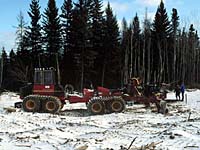
The timber permit is used to allocate timber to a wide range of different forest industry operations for a one year time period. |
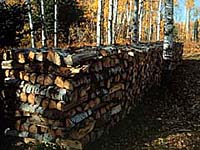
The forest product field permit allows individuals to use a small amount of timber for their personal use such as firewood. |

A term cutting agreement allows a company to harvest timber over a specified number of years with certain conditions attached. |
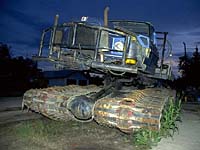
When a forest company wants to lease publicly owned land, it must submit a long-term forest management proposal for approval. The proposal outlines the goals and plans the company has for the area it wants to lease. |
To achieve a sustainable yield or a perpetual supply of timber,
foresters calculate a harvest level using an Annual Allowable
Cut formula. The calculation is then adjusted to take into
account biological risks such as fire and disease and to protect
other forest values such as wildlife habitat and recreational
development.
In 1992, the Annual Allowable Cut from provincial Crown lands
(productive, non reserved forest) was 6.65 million cubic metres
of net merchantable volume per year; 55 percent of this was coniferous
and 45 percent deciduous. Trembling aspen makes up 40 percent
of the Annual Allowable Cut, followed by jack pine and spruce
at approximately 25 percent for each species.
During the last five years, the average annual harvest has been
about 3.2 million cubic metres. Only 50 percent of the allowable
cut has been utilized each year. This means that Saskatchewan
has a surplus of available timber. Some of this surplus timber
is located in remote areas and its harvest is not, at present,
economically feasible. At the same time, some regions of the province
are experiencing shortages of harvestable conifers.
Forest harvesting guidelines in Saskatchewan vary according to
the management prescription for each forest stand and the topography
of the area to be cut. Forest companies must comply with these
guidelines. In softwood forests, cut blocks are generally 40 hectares
or less. In hardwood forests cut blocks can be as large as 120
hectares, but the average size is closer to 70 hectares.
